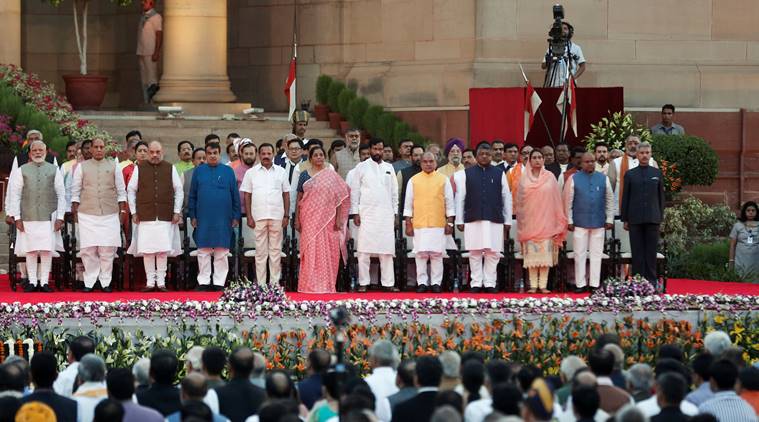As the country heads into an economic downturn, the new government’s focus would be on reviving consumption demand, pushing investments and exports, and resolving the liquidity issues in the financial sector to help India get back on the 7%-plus growth trajectory in the long term.
Leading indicators have already started to reflect the slowdown, with a downward slide visible in the factory output measured by the Index of Industrial Production (IIP), which contracted to a 21-month low of 0.1% in March on the back of weak investment and consumption demand. For the 2018-19 financial year as a whole, IIP growth stood at 3.6%, much lower than the 4.4% recorded in the previous financial year.

Growth in corporate earnings fell to a six-quarter low of 10.7% in the January-March quarter on weakening consumer sentiment and softening commodity prices, rating agency ICRA said, citing a sample of over 300 companies.
“The signs of slowdown in domestic demand are visible both in urban and rural areas,” the Federation of Indian Chambers of Commerce and Industry (FICCI) said in a statement earlier this week, while submitting pre-Budget petitions to the Finance Ministry.
GDP data for the January-March quarter, and provisional estimates for the 2018-19 fiscal are scheduled to be released on Friday, and are expected to show a loss of momentum in India’s growth.
READ | With Finance Ministry, Nirmala Sitharaman remains in Modi’s CCS
Reviving investment
The slowing consumption story and subdued growth in exports are expected to keep the country’s growth rate under pressure in the coming months. The automobile sector has been witnessing subdued growth; the passenger car segment declined 16% in April 2019. The FMCG sector, too, has been seeing a slowdown in volume growth.
Story continues below this ad
Economists say India’s growth story, which has gained from growth in consumption demand, has now taken a hit because demand, especially rural demand, has crumbled. Pronab Sen, Country Director for the India Programme of the International Growth Centre and former Chief Statistician of India, said cash transfers through PM-KISAN could help restore some rural demand.
The weakening demand will make investment hard to come by in the near future, Sen said. Both corporate and non-corporate investments have slowed, he said: “Everybody is concerned that corporate investment has started to weaken, but the bigger problem to my mind is non-corporate investment has been down for the last two years. Why aren’t we talking about that? What do we need to get non-corporate investment? Those are actually the investments that create jobs.”
Also read | What to expect from the Ministry of External Affairs
Addressing liquidity issues
Apart from the revival of investment and demand, other key elements in the process of revival will be measures to resolve liquidity issues from the Reserve Bank of India, along with speeding up the bad loan resolution process under the Insolvency and Bankruptcy Code (IBC).
Story continues below this ad
The IBC was the most significant financial sector reform of the Modi-I government, aimed at speedy resolution of stressed assets of more than Rs 10 lakh crore. While a recovery rate of around 43% points to early success of the law, delays in successful resolution in nearly 48% of cases has been a concern.
Addressing liquidity issues of the Non Banking Financial Companies sector is expected to be another priority. A number of NBFCs have stopped fresh loan disbursements, and many are on the verge of defaulting on repayments. Economists and market experts say that the revival of the NBFC sector is critical for the economy, as they account for a large part of credit disbursal in tier-II and tier-III towns.
Financial sector entities including NBFCs, mutual funds, and corporate-focused lenders have faced liquidity challenges since September last year, after the IL&FS group started defaulting on its aggregate debt of over Rs 90,000 crore. The situation has worsened over the last month after rating agencies started downgrading debt papers issued by NBFCs, weakening their ability to raise funds.
Explained | What next for Defence? New equipment, bigger budget key
Story continues below this ad
Raising tax revenues
As consumption is curtailed, tax revenues are expected to take a hit. Government expenditure after the elections will require a commensurate growth in revenue collections, an area where the government struggled in the previous financial year. Both direct tax revenue and Goods and Services Tax (GST) revenue have fallen short of the revised Budget estimates for 2018-19 by at least Rs 1 lakh crore. Going forward, meeting the already declared direct tax targets for this financial year is going to be a challenge, which could prompt the Tax Department to scale down its targets in the full Budget for 2019-20 that is expected to be presented in mid-July.
On the GST front, the focus will be more on boosting compliance and simplification than tweaking tax rates. Any major change in tax rates, or a merger of slabs, is expected to be taken up only next year, given the possibility of revenue losses. A move could be made towards including some items that are currently out of the ambit of GST, such as natural gas and aviation turbine fuel.
Don’t miss from Explained | Priorities for new Home Minister: J&K polls, Northeast

 India’s Prime Minister Narendra Modi and members of his cabinet stand for national anthem during a swearing-in ceremony at the presidential palace in New Delhi, India May 30, 2019. (Reuters Photo: Adnan Abidi)
India’s Prime Minister Narendra Modi and members of his cabinet stand for national anthem during a swearing-in ceremony at the presidential palace in New Delhi, India May 30, 2019. (Reuters Photo: Adnan Abidi)





































